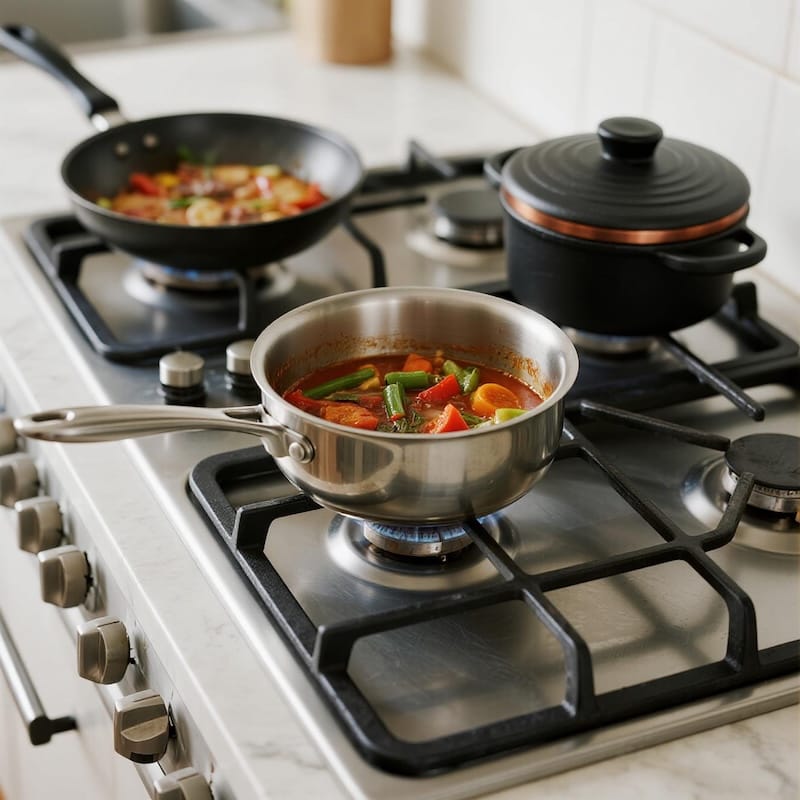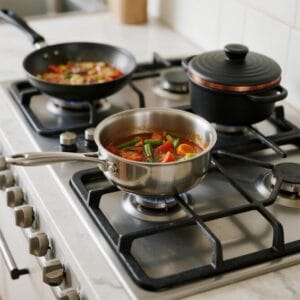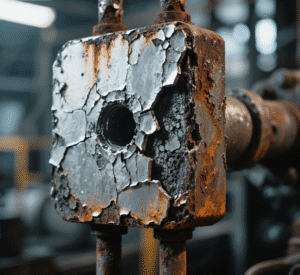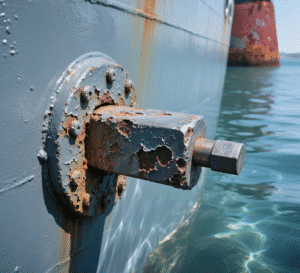Choosing a new saucepan set feels overwhelming, right? You worry about ending up with pans that burn food or fall apart. Let’s explore the options together.
The best saucepan set truly depends on your cooking needs and budget. For excellent all-around performance, durability, and versatility on any stovetop, triply stainless steel cookware is often the top recommendation for most home cooks.
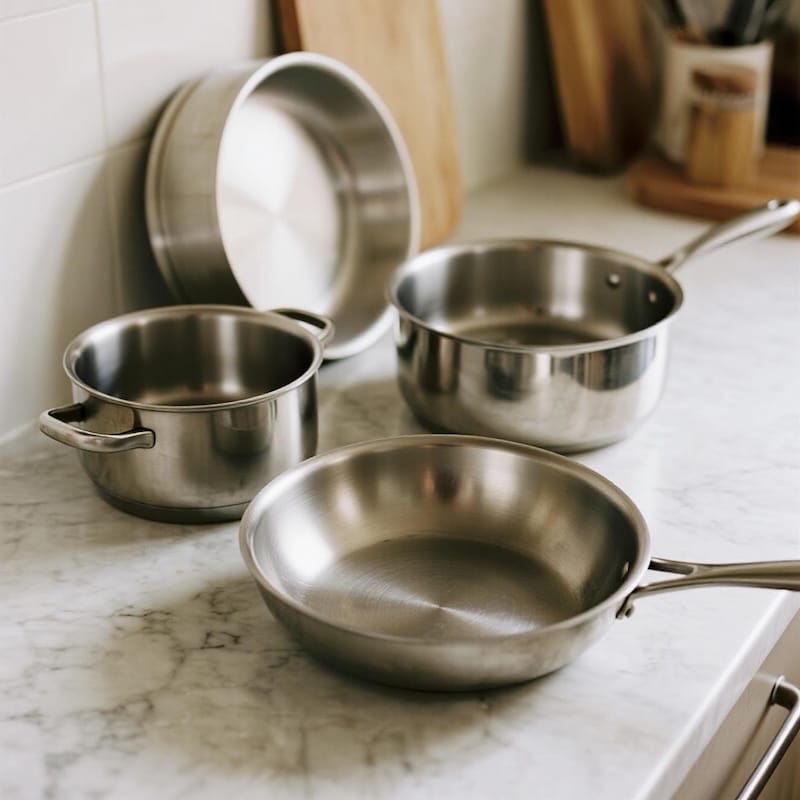
Finding the perfect saucepan set isn’t about one single "best" answer. It really comes down to matching the cookware material to how you cook and what results you want. Before triply cookware became common, I personally preferred stainless steel over basic non-stick pans because they lasted longer and felt safer without chemical coatings. But technology has improved cookware significantly since then. Let’s dive into the details to help you choose the right set for your kitchen.
Which saucepan sets are best?
Are you drowning in saucepan options online? Worrying about picking a set that won’t meet your needs? Let’s simplify by focusing on the core materials available.
The "best" set varies. Triply stainless steel provides balanced performance. Cast iron offers superior heat retention for slow cooking. Copper core pans give unmatched temperature control for delicate tasks.
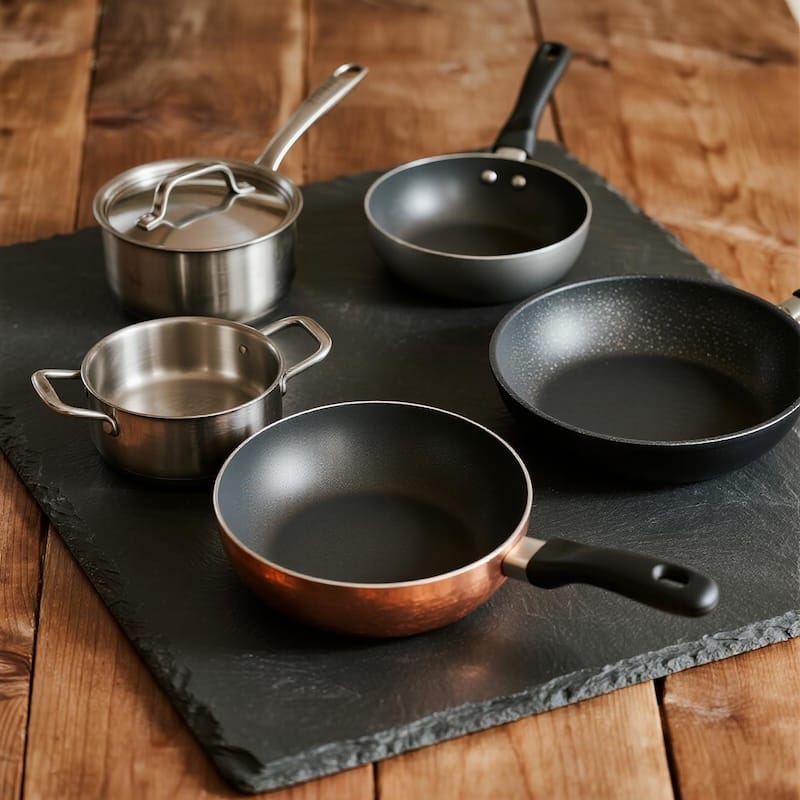
Deciding on the "best" saucepan set really means finding the best set for you. What works wonders for a professional chef making delicate sauces might be overkill for someone mainly heating soups. I remember when I first started equipping my kitchen; I thought one type of pan should do everything! I quickly learned that different materials shine in different situations. Understanding the strengths and weaknesses of each material is key.
Key Material Considerations
Let’s look at the most common materials used in saucepan sets today:
| Material Type | Key Strength | Best For | Consideration |
|---|---|---|---|
| Triply Stainless Steel | Balanced Performance | Everyday cooking, versatility, durability | Price, Weight |
| Cast Iron | Heat Retention | Searing, slow cooking, baking | Weight, Maintenance |
| Copper Core Steel | Heat Responsiveness | Precise sauce making, delicate ingredients | High Cost |
| Hard-Anodized Aluminum | Lightweight, Good Heating | General use, easy handling | Induction issues |
| Non-stick Aluminum | Food Release, Easy Clean | Eggs, pancakes, low-fat cooking | Durability, Heat |
Think about what you cook most often. Do you need precise heat, or just something simple and easy to clean? Your cooking style points towards the best material choice.
What is the best pan set for home cooks?
Equipping your home kitchen feels like a big investment? Don’t want cookware that scratches easily or needs replacing soon? Focus on durability, versatility, and simple upkeep.
For most home cooks, a triply stainless steel set is often the ideal choice. It offers great cooking results, lasts for years, works on all stovetops including induction, and is relatively easy to maintain.
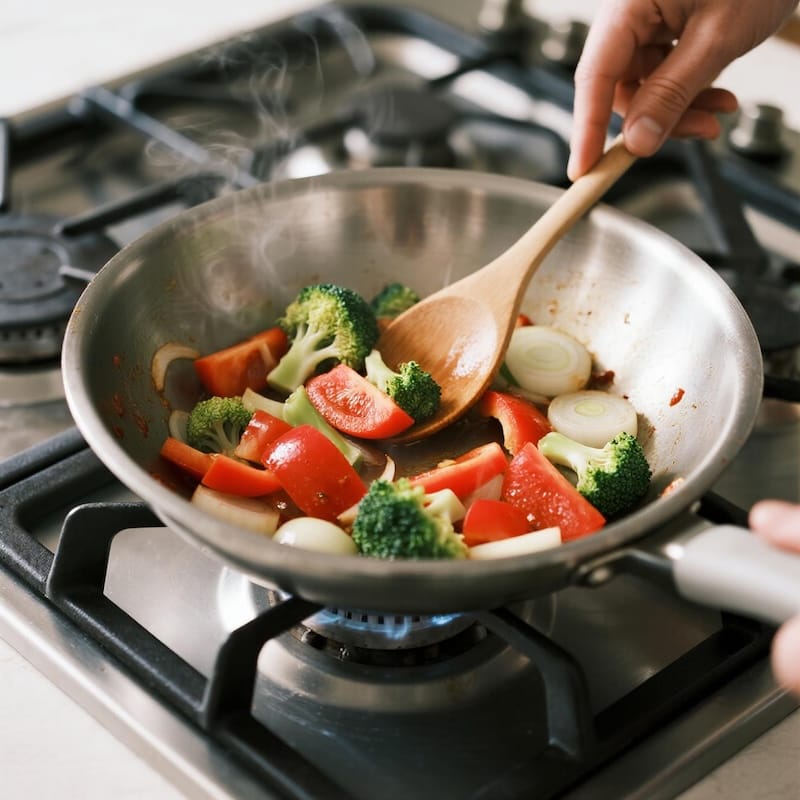
Home cooks usually need cookware that can handle a bit of everything – boiling pasta, simmering sauces, sautéing vegetables, maybe even searing meat. It needs to be tough enough for daily use and compatible with the stovetop you have. That’s why I often recommend triply stainless steel to friends and family setting up their kitchens.
Why Triply Works Well at Home
Let’s break down why triply stainless steel hits the sweet spot for home use:
- Durability: The multi-layer construction (typically 304 stainless steel inside, aluminum core, 430 stainless steel outside) is very strong. It resists warping, scratching, and corrosion. Unlike non-stick coatings, the cooking surface doesn’t easily degrade over time. I’ve been using my own triply set for over 12 years, and it still performs brilliantly.
- Versatility: Triply pans heat evenly thanks to the aluminum core, preventing hot spots that burn food. They work efficiently on gas, electric, ceramic, and induction stovetops. Many are also oven-safe to moderate temperatures.
- Heat Performance: While not as instantly responsive as copper, the heat distribution is far superior to basic stainless steel or non-stick aluminum pans. This gives you better control for consistent cooking results.
- Safety & Maintenance: The 304 stainless steel interior is non-reactive and doesn’t leach chemicals into food. Cleaning is straightforward – usually just soap and water, and Barkeeper’s Friend for tougher spots.
While non-stick is convenient for certain foods, its lifespan is limited. Cast iron is fantastic for specific tasks but heavier and requires more care. Triply offers the best blend for everyday cooking challenges.
What cookware is not recommended for stovetop?
Using the wrong type of pot or pan can be risky, right? Worried you might damage your cookware or even your stovetop? It’s smart to know what to avoid.
Generally, avoid using items designed only for baking, like most glass or ceramic bakeware, on a direct stovetop burner. Also, badly warped pans are unsafe and cook inefficiently on flat tops.
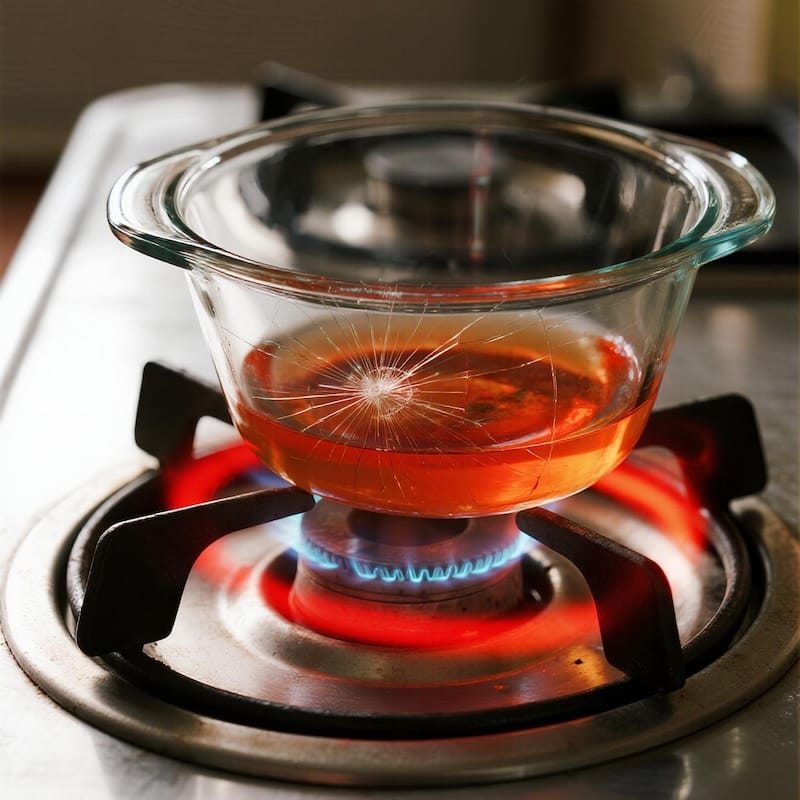
Not everything that holds food is safe or effective for direct stovetop heat. Using the wrong item can lead to breakage, damage, or just poor cooking results. It’s important to match your cookware to the heat source.
Material Limits and Condition Issues
Here’s a closer look at what to keep off your burners:
- Glass & Ceramic Bakeware: Most dishes made from these materials are designed for the gradual, even heat of an oven. Placing them directly on a stovetop burner creates intense, localized heat, causing thermal shock that can make them shatter. There are specific stovetop-safe glass/ceramic lines (like Visions), but standard Pyrex or ceramic casserole dishes are usually a no-go.
- Warped Pans: A pan with a rounded or distorted bottom won’t sit flat on electric coil, ceramic glass, or induction cooktops. This leads to terrible heat transfer (it takes forever to heat up!), uneven cooking, and instability – the pan could easily slide or tip. A flat bottom is crucial for these stovetops.
- Melamine or Certain Plastics: While obvious, it’s worth noting: never put plastic bowls or containers on a stovetop. Handles also matter; ensure pan handles are made of oven-safe materials (like metal or high-heat silicone) if you plan to move pans between stovetop and oven. Low-melting point plastic handles can be a hazard even just on the stovetop if flames lick up the sides.
Stovetop Compatibility
Also consider your stovetop type:
- Induction: Requires cookware with a magnetic base (like stainless steel layer 430 or cast iron). Aluminum, copper, and glass generally won’t work unless they have a bonded magnetic base.
- Glass/Ceramic: Avoid dragging rough materials like bare cast iron across the surface, as it can cause scratches. Lift, don’t slide. Ensure bottoms are clean to prevent burning residue onto the glass.
What kind of sauce pan is best for cooking?
Do your delicate sauces sometimes scorch at the bottom? Frustrated when your pan reacts slowly to temperature changes, leading to boil-overs? Choose a pan with excellent heat control.
For making sauces, pans offering superior heat distribution and responsiveness are best. Triply stainless steel and copper core pans excel, preventing hot spots and allowing precise temperature adjustments for perfect simmering.
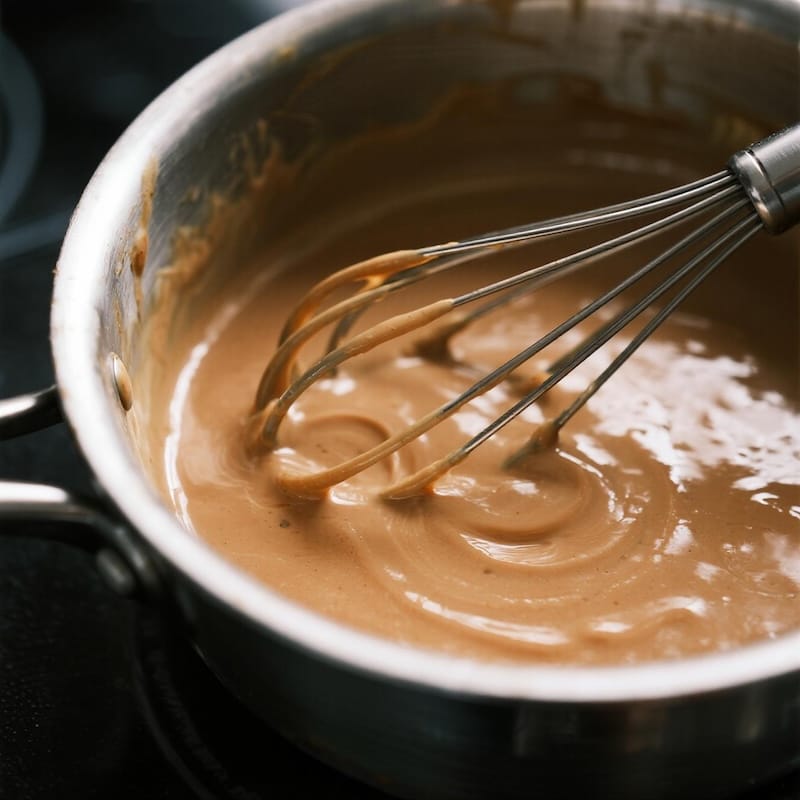
Making a great sauce often involves careful temperature management – bringing ingredients up to heat gently, holding a steady simmer, and sometimes needing to cool things down quickly. The right saucepan makes this much easier.
Key Features for Sauce Pans
Let’s look at why certain materials are better suited for sauces:
- Heat Distribution: This is crucial. Sauces, especially dairy or sugar-based ones, can easily scorch if the pan has hot spots. The aluminum or copper core in clad cookware (like triply or copper core stainless steel) spreads heat evenly across the bottom and even up the sides. This prevents scorching and promotes gentle, uniform cooking. Basic stamped aluminum or thin stainless steel pans often heat unevenly.
- Responsiveness: You need a pan that reacts reasonably quickly when you turn the heat up or down. Copper is the champion here, heating and cooling almost instantly. Triply stainless steel offers a very good balance – responsive enough for most sauce work, thanks to its aluminum core, without the very high cost of copper. Cast iron, conversely, holds heat too well; it’s slow to heat up and slow to cool down, making precise temperature adjustments difficult.
- Material Non-Reactivity: Stainless steel (like the 304 interior of triply pans) is excellent because it won’t react with acidic ingredients like tomatoes or wine, which can happen with bare aluminum or copper, potentially affecting the taste or color of your sauce.
While shape matters too (taller sides help prevent splashing), the material’s thermal properties are the most critical factor for success with sauces. A heavy-bottomed, clad saucepan is a worthwhile investment if you enjoy making sauces from scratch.
Conclusion
Choosing the right saucepan set depends on your cooking style and needs. However, for fantastic performance, long-lasting durability, and everyday versatility, triply stainless steel cookware stands out as an excellent all-around choice.

